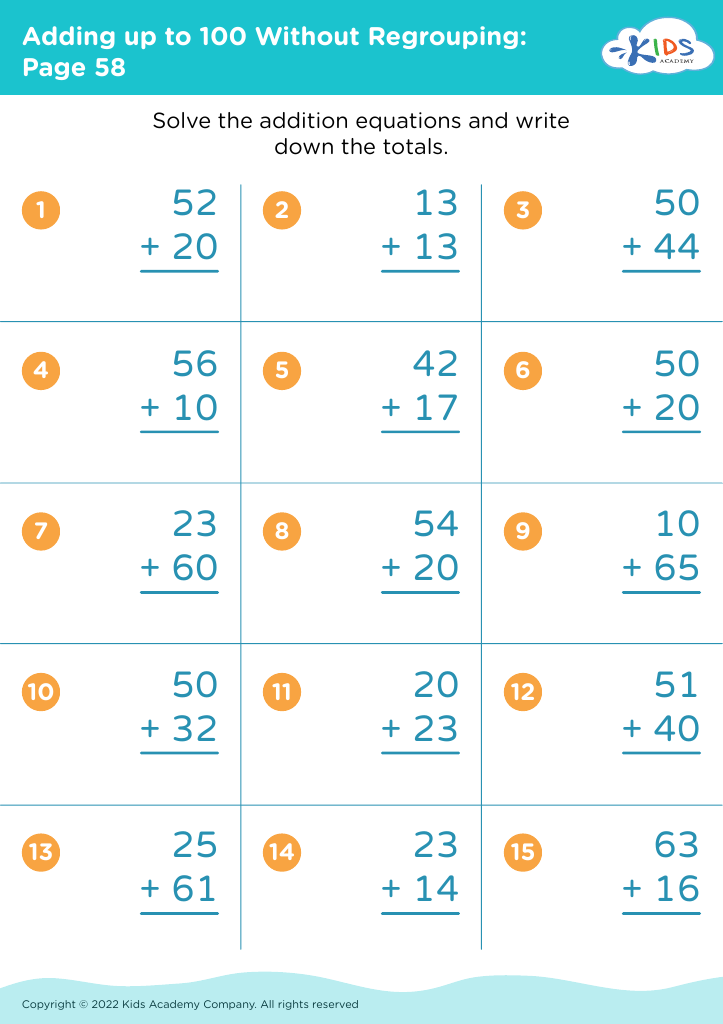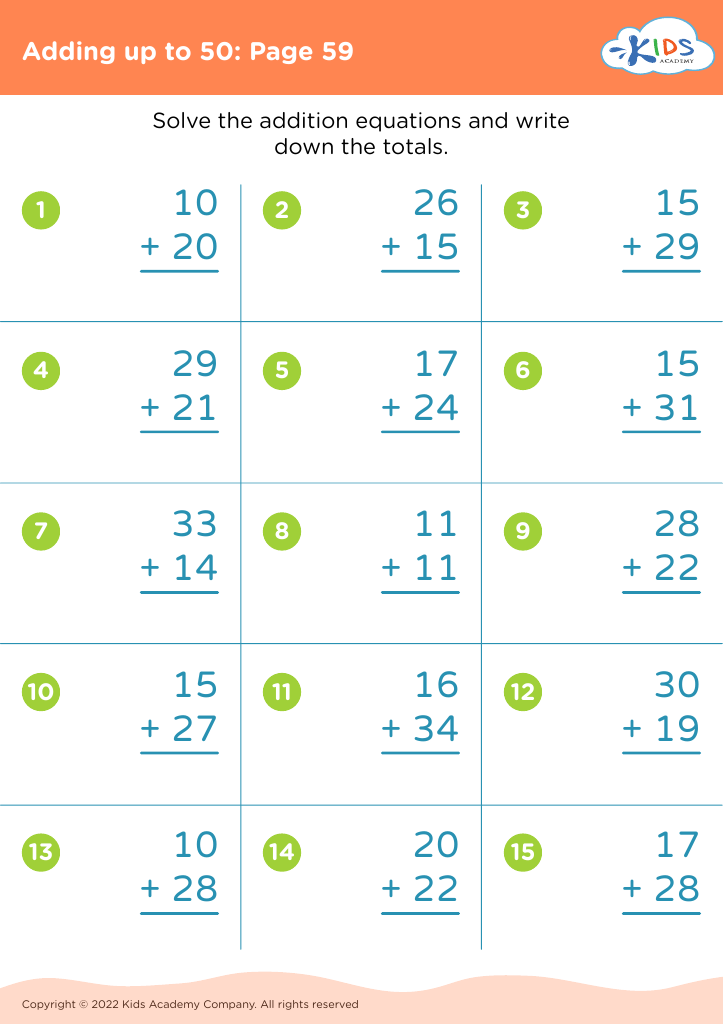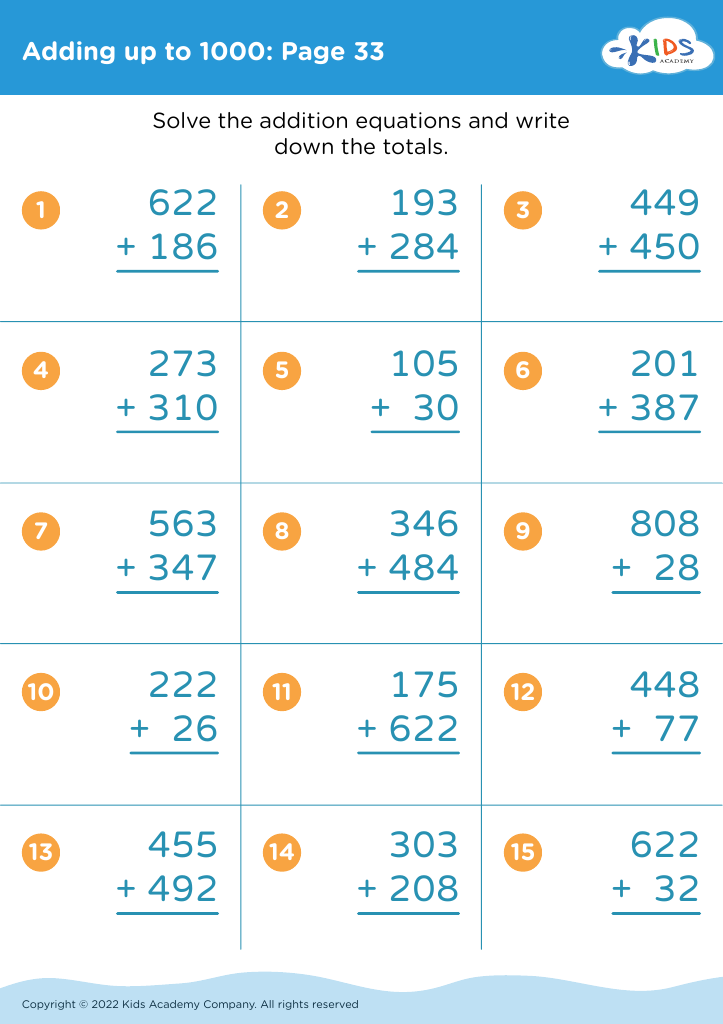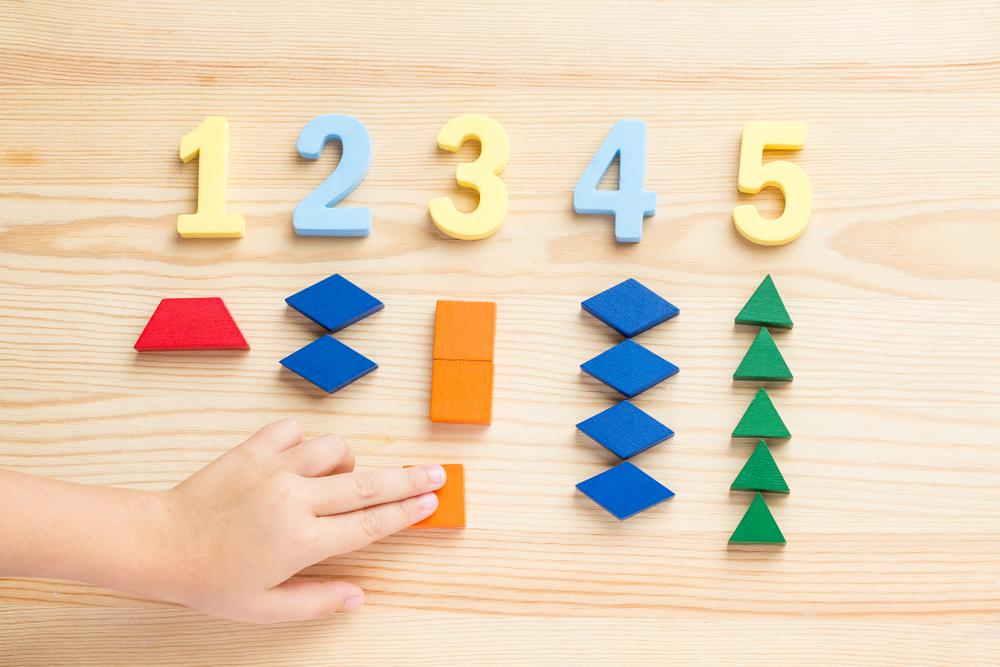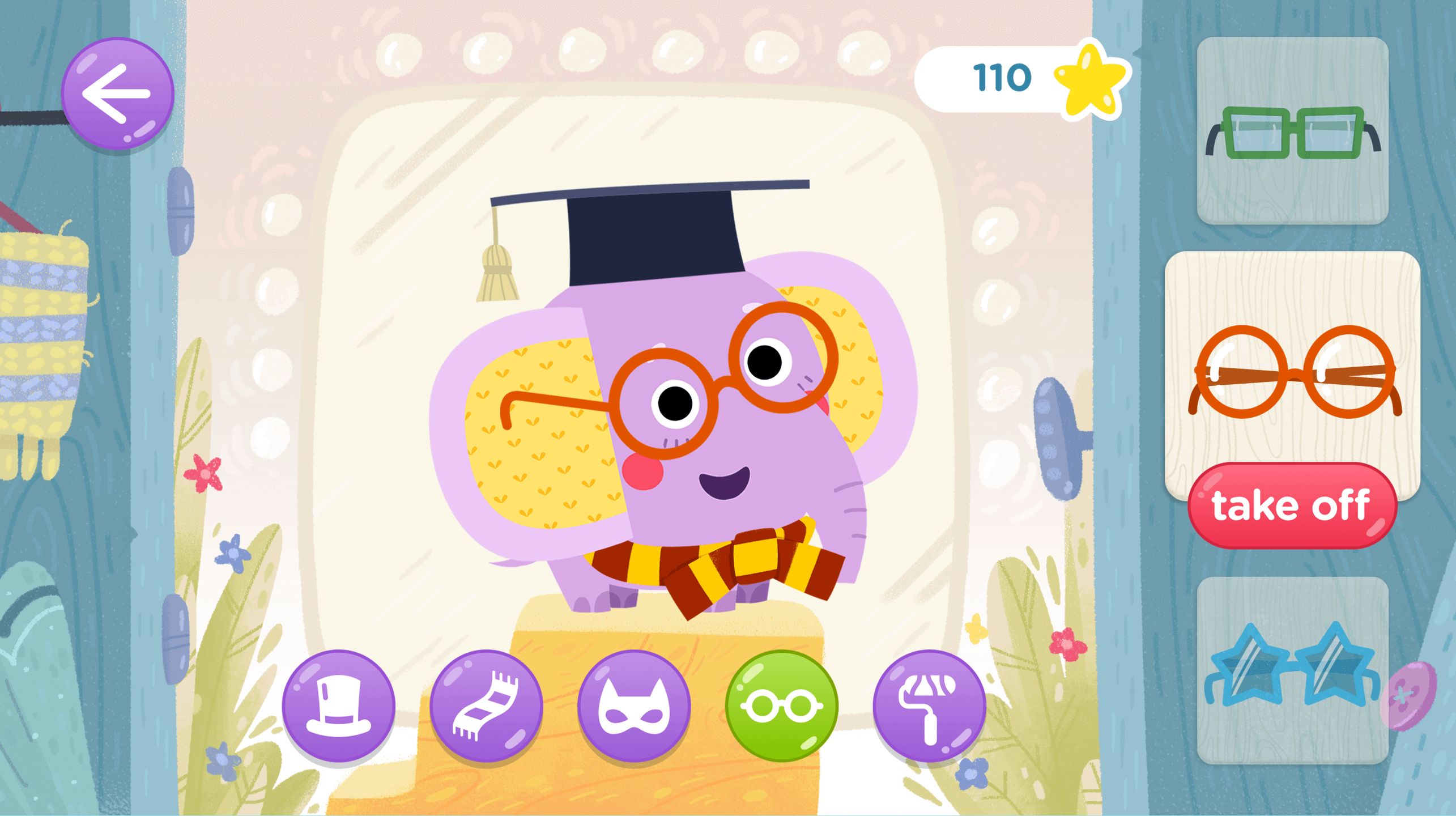Understanding sequence Addition & Subtraction Worksheets for Ages 5-8
4 filtered results
-
From - To
Discover our engaging "Understanding Sequence Addition & Subtraction Worksheets" designed for children ages 5-8. These interactive resources help young learners grasp the foundational concepts of addition and subtraction through the natural progression of sequences. By practicing these skills in a fun and visually appealing manner, children enhance their critical thinking and problem-solving abilities. Our worksheets encourage step-by-step learning, ensuring that each child develops confidence in their mathematical skills. Perfect for classroom or at-home use, these worksheets are a vital tool in fostering a love for math while building essential cognitive skills. Start exploring math sequences today!
Understanding the sequence of addition and subtraction is crucial for children aged 5-8, as it forms the foundation for their mathematical learning. At this age, children are developing their numerical fluency, which is not just about calculating but also about understanding relationships between numbers and operations. Mastery of addition and subtraction sequences supports problem-solving skills and logical thinking.
By learning how to recognize and apply these operations in a sequence, children can better tackle more complex mathematical concepts later, such as multiplication, division, and even fractions. Moreover, when students grasp the relationship between addition and subtraction, it fosters a deeper comprehension of equations and helps them understand that subtraction is the inverse of addition.
Parents and teachers play a pivotal role in nurturing these skills. Engaging children in activities like number games, problem-solving tasks, or practical applications, such as shopping scenarios or cooking, makes learning enjoyable and relatable. By emphasizing the importance of these foundational skills, we empower children to build confidence in their mathematical abilities and instill a lifelong love of learning. Ultimately, understanding the sequence of addition and subtraction equips children with vital skills for academic success and daily life.
